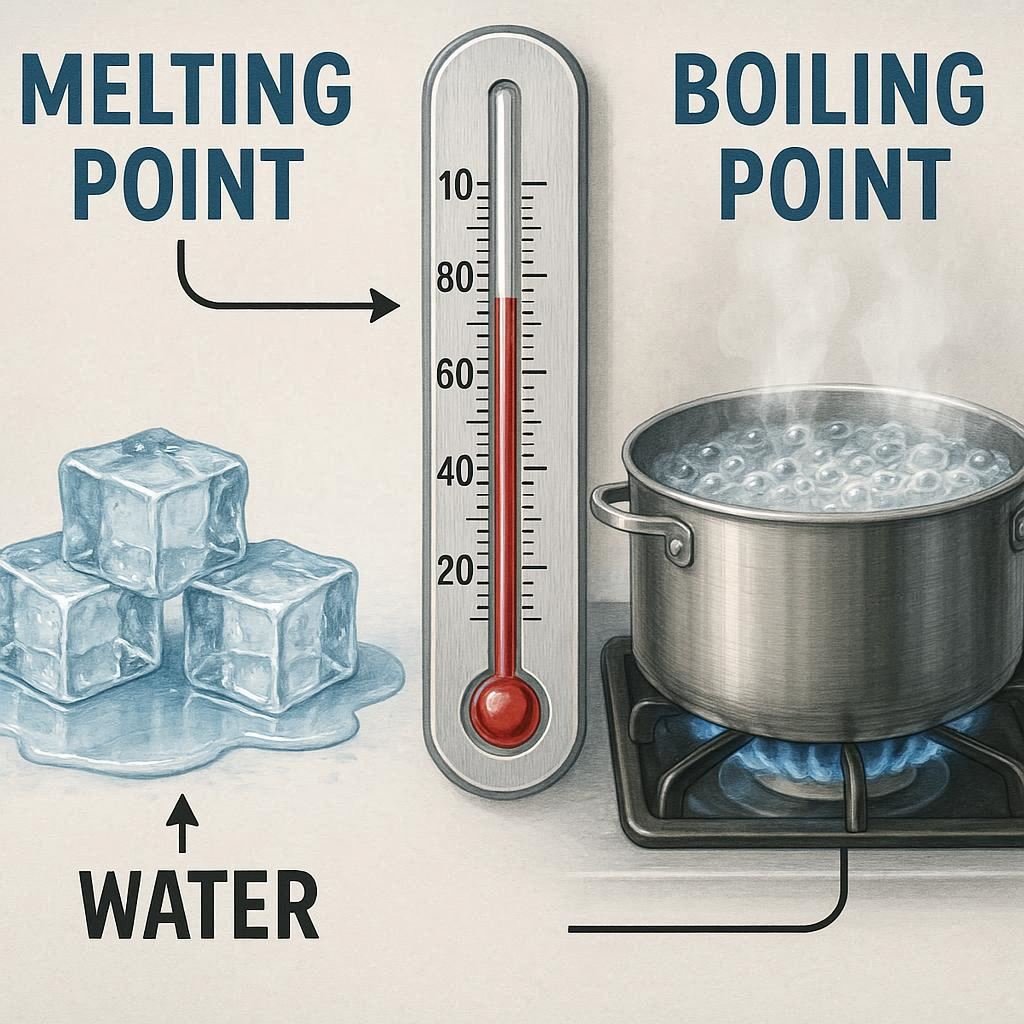
Melting Point Vs Boiling Point Property Melting Point Boiling Point Definition The temperature at which a solid turns into a liquid. The temperature at which a liquid turns into a gas. Phase Change Solid to liquid. Liquid to gas. Energy Required Energy is required to overcome the forces holding the molecules in the solid state. […]
| Property | Melting Point | Boiling Point |
|---|---|---|
| Definition | The temperature at which a solid turns into a liquid. | The temperature at which a liquid turns into a gas. |
| Phase Change | Solid to liquid. | Liquid to gas. |
| Energy Required | Energy is required to overcome the forces holding the molecules in the solid state. | Energy is required to overcome the intermolecular forces and convert the liquid to a gas. |
| Dependence on Pressure | Can be affected by pressure but usually not as significantly. | Strongly dependent on external pressure (higher pressure raises boiling point). |
| Example (Water) | 0°C (32°F) | 100°C (212°F) |
| Nature of Change | The change is gradual. | The change happens rapidly when the boiling point is reached. |
| State at Room Temperature | Solid below melting point. | Liquid below boiling point. |
| Measurement | Can be observed by heating the solid until it starts to melt. | Can be observed when the liquid begins to boil (produce steam). |
You May Like

The melting point is when a solid becomes a liquid, while the boiling point is when a liquid becomes a gas.
The melting point is the temperature at which a solid turns into a liquid.
The principle of melting point is that a pure solid melts at a specific temperature where its solid and liquid phases are in equilibrium.
Melting point is not always 0°C; only pure water melts at 0°C under standard conditions.
Techniques to determine melting point include the capillary tube method, melting point apparatus, and differential scanning calorimetry (DSC).
The melting point helps identify substances and assess their purity.
Calibrate a melting point apparatus by using pure standard substances with known melting points and adjusting the device to match those values. ommon standards used for calibrating melting point apparatus include:
1. Benzoic acid (Melting point: ~122°C)
2. Acetanilide (Melting point: ~114°C)
3. Caffeine (Melting point: ~238°C)
4. Sulfanilamide (Melting point: ~165°C)
5. Vanillin (Melting point: ~81°C)
These are pure compounds with well-defined melting points.
The capillary tube in a melting point apparatus is used to hold a small sample of the solid for observing the temperature at which it melts.
The boiling point is the temperature at which a liquid changes into a gas.
The apparatus used to determine boiling point is called a boiling point apparatus or simple distillation setup.
The principle of boiling point is that a liquid boils when its vapor pressure equals the external atmospheric pressure.
Melting point is the exact temperature at which a pure solid changes to liquid, while melting range is the temperature range over which an impure or mixed solid melts.
In Class 9 Science, melting point is defined as the temperature at which a solid changes into a liquid.
To perform a melting point determination:
Here are 5 examples of melting points of common substances:
Further Reading
Quick Links